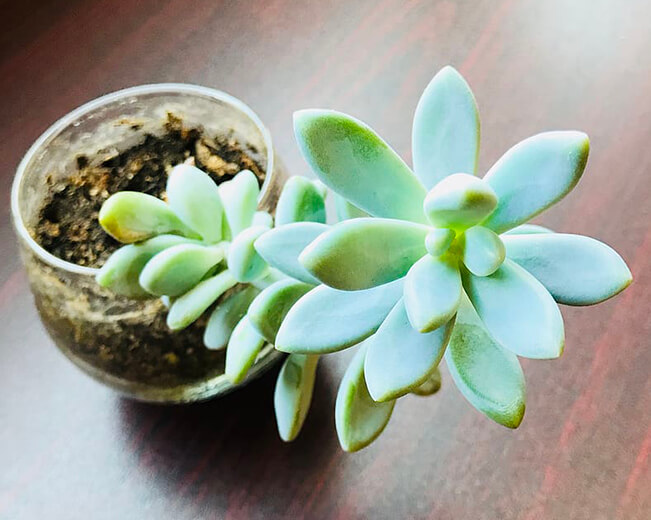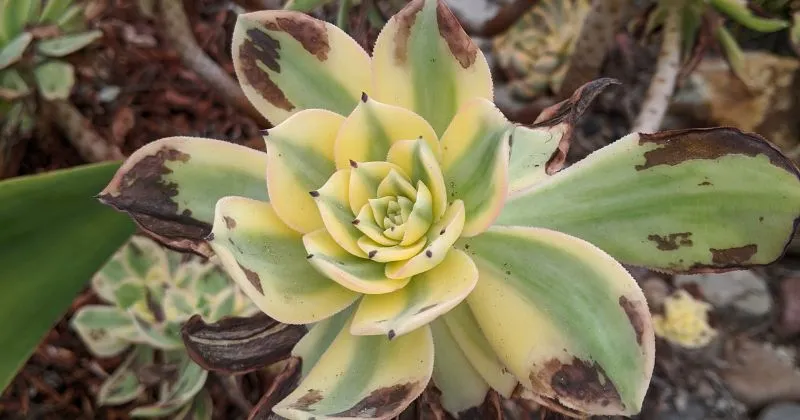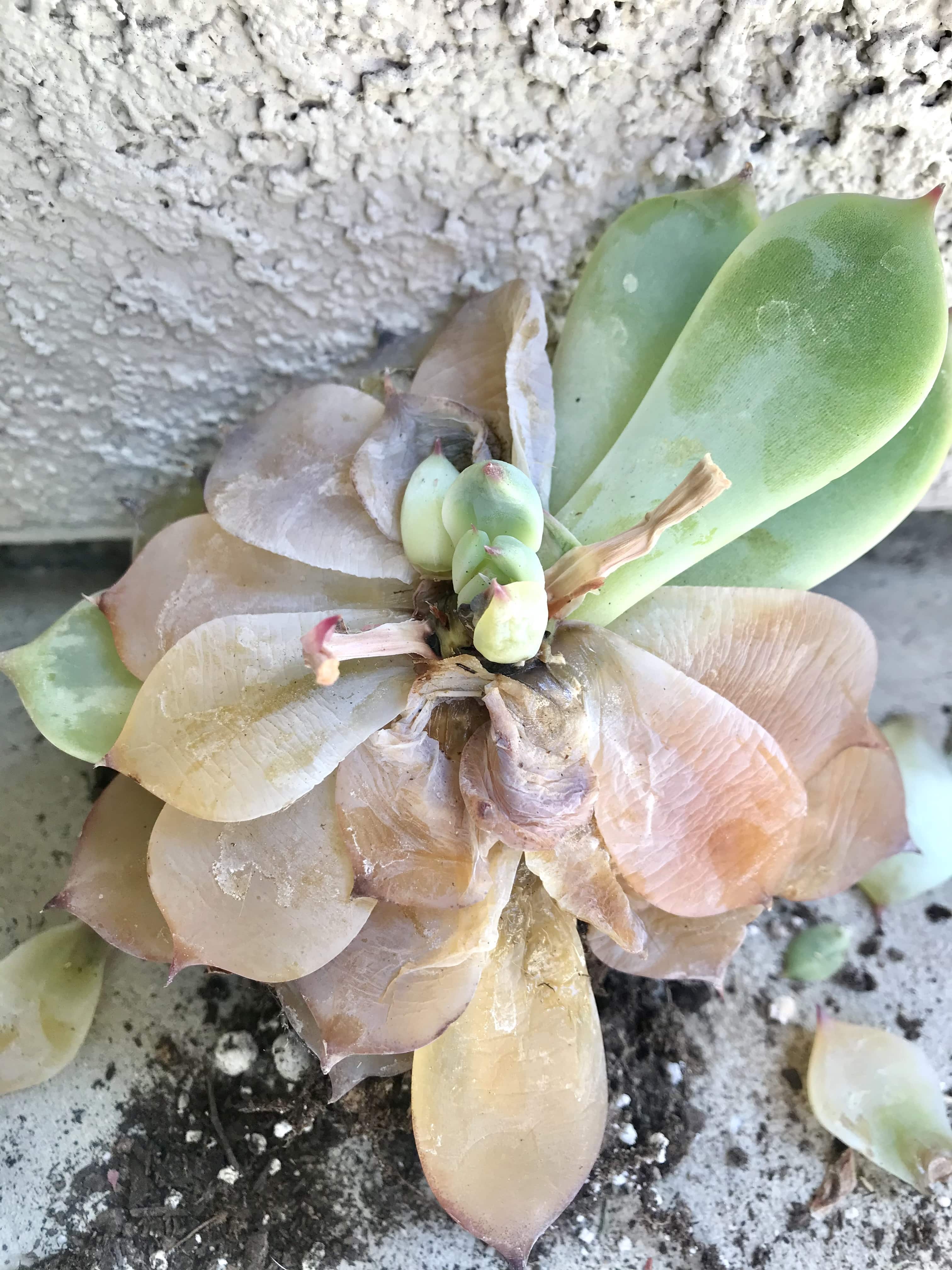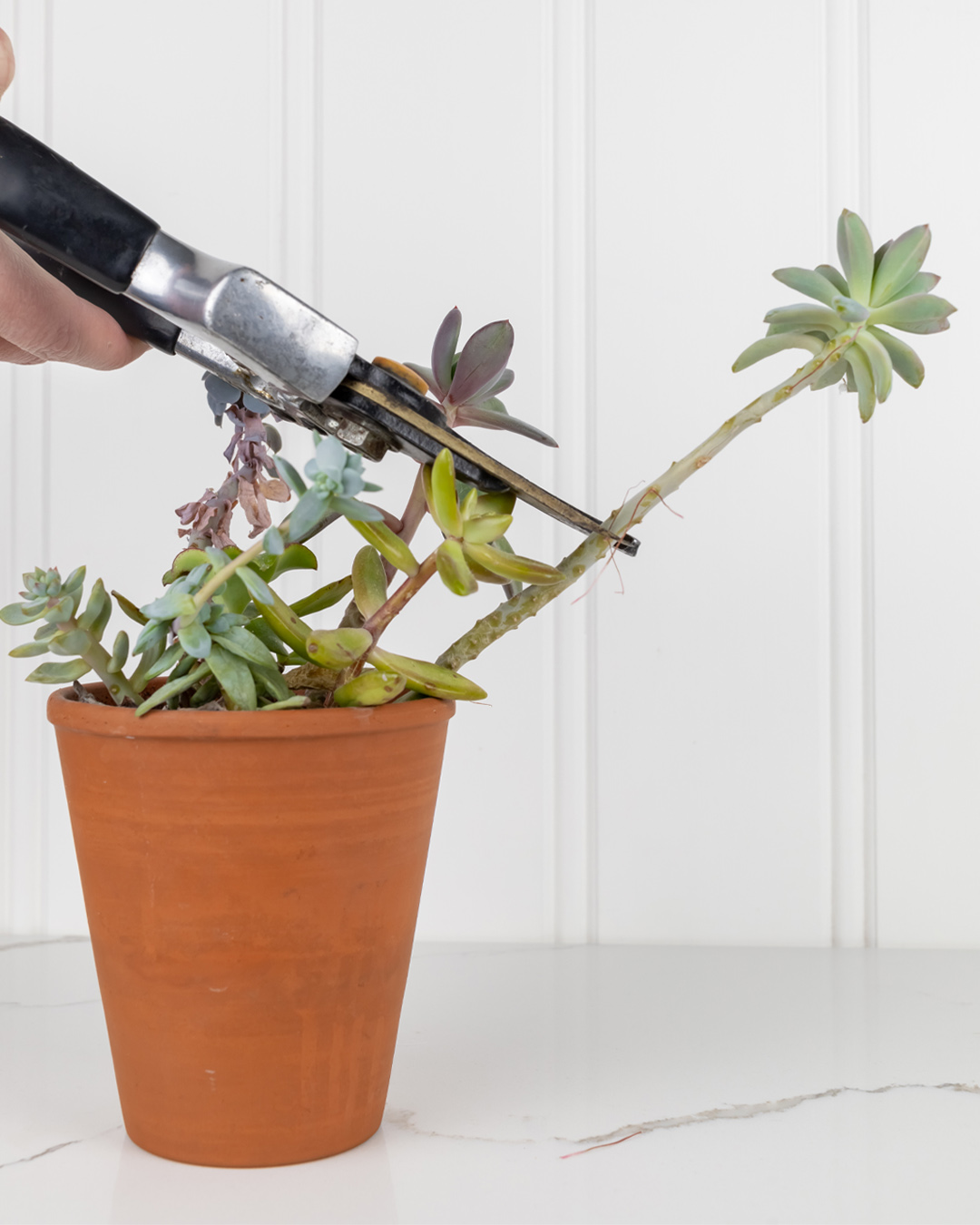As humans, we are aware that our bodies naturally can heal minor wounds, fend off bacteria, and fight diseases when we're healthy. This self-healing ability is shared by many animals, allowing them to bounce back from injuries and illnesses over time. But what about plants, especially succulents? Unlike animals, plants lack a nervous system or an immune system, so can these tough, resilient beauties heal themselves when they get damaged?

Succulents are adored for their striking looks, easy care, and almost uncanny resilience, which has made them a favorite among plant enthusiasts. But even the hardiest of plants can face damage - whether it’s a broken leaf or stem, sunburn, or even a pesky pest infestation. Naturally, as someone who cares about their plants, it’s concerning to see any kind of damage. So it’s important to ask: Can succulents heal themselves after sustaining damage? And if they can, what can we do to help them recover more effectively?
Understanding how succulents heal themselves is key to caring for these resilient plants. Succulents have adapted to survive in harsh environments, equipping them with remarkable abilities to recover from stress and injury. However, the extent of their self-healing depends on several factors, including the type of damage, the specific species, and the care they receive during recovery. In this blog, we’ll look into the fascinating ways succulents repair themselves, the types of damage they can overcome, and how you can best support their healing process. Whether it’s a minor cut or a more significant issue, learning how to assist in your succulent’s recovery will not only help save your plants but also deepen your appreciation for their natural toughness and resilience.
Self-Healing In Succulents
The concept of self-healing in plants refers to a plant's ability to repair damage and maintain its health. Unlike animals, plants lack a nervous system or an immune system, yet they have developed unique mechanisms to protect themselves and recover from injuries.
When a plant is injured, it triggers a series of responses to seal off the damaged area, prevent the spread of pathogens, and regenerate new tissue. This process typically involves the production of special chemicals and proteins that help to close wounds, combat infections, and stimulate growth. For instance, when a leaf or stem is cut, the plant can form a protective barrier known as a "callus" over the wound, which prevents further damage and allows for new cells to form, eventually leading to tissue regeneration. Succulents, in particular, are known for their resilience and ability to heal from physical damage. They can often recover from broken leaves, sunburn, and other forms of stress due to their specialized water-storing tissues and thick, protective surfaces.
How Do Succulents Heal Themselves?
Succulents are renowned for their ability to store water in their thick leaves, stems, and roots, a trait that not only helps them survive in arid environments but also plays a crucial role in their ability to self-heal. When a succulent is injured, whether by physical damage or environmental stress, its internal water reserves allow it to maintain cellular function and prevent dehydration. This water storage capability provides the plant with the resilience to endure periods of injury or drought, giving it the time needed to initiate repair processes.

When succulents sustain damage, one of their primary self-healing responses is the formation of calluses or scars over the wounded areas. This process begins as the plant produces a protective layer of cells at the site of injury, effectively sealing off the damaged tissue from external threats like pathogens and preventing further moisture loss. The callus formation is a vital defense mechanism that helps the plant survive while it slowly repairs or replaces the damaged tissue beneath the scar.
Succulents also possess remarkable regenerative abilities, allowing them to grow back parts that have been lost or damaged. For example, if a leaf or a section of the stem is broken off, many succulents can regenerate new growth from the healthy tissue that remains. This regenerative process is driven by the plant’s meristematic cells, which are capable of developing into various types of tissues needed for repair. Over time, the succulent may produce new leaves, roots, or even entire offshoots from the site of damage, demonstrating a remarkable capacity for recovery and survival. These self-healing mechanisms make succulents not only resilient but also highly adaptable to a variety of challenging conditions, ensuring their survival in even the harshest environments.
Can Succulents Heal All Their Damages?
:max_bytes(150000):strip_icc()/how-to-revive-a-succulent-6752840-3-METHOD-Overwatering-1.1-Prunemushyleaves-5fd019601cda419faffd8768a07dd8d1.jpg)
Succulents are known for their resilience, but not all types of damage can be healed. In some cases, the harm is simply too severe to be reversed, especially when it comes to issues like burnt leaves, rotten stems, or even elongated stems due to insufficient light. Burnt leaves, for instance, often turn brown or black and become dry and brittle as the tissue dies. Similarly, when a stem begins to rot due to overwatering or poor drainage, the affected area softens, darkens, and may even become mushy. In both cases, the damaged tissue cannot regenerate or heal itself.

The plant stretches toward the light source, resulting in a leggy appearance with thin, weak stems. While etiolation doesn’t necessarily kill the plant, it permanently alters its shape and structure. Unfortunately, once a succulent has become elongated, it cannot revert to its original, compact form.
In these situations, the best approach is to remove the damaged parts of the plant. This might involve trimming away burnt leaves, cutting out rotten portions of the stem, or even pruning elongated stems to encourage new, healthier growth. By removing the damaged areas, you help prevent further issues, such as the spread of rot or continued weak growth. It also allows the succulent to conserve its energy and direct it towards producing new, healthy tissue rather than trying to sustain parts that are beyond recovery.
While the original damage—whether it’s burnt, rotten, or elongated - cannot be undone, succulents are remarkably adaptable. If provided proper care, your succulent can overcome the initial damage and continue to thrive, often producing new growth as it recovers.
Common Injuries and How Succulents Heal
Leaf Drop and Breakage

Leaf drop and breakage are common issues that succulents face, often due to physical damage, stress, or environmental changes. Fortunately, succulents are incredibly resilient when it comes to handling these types of injuries. When a leaf falls off or breaks, the plant doesn’t immediately suffer; instead, it begins a process of self-preservation and regeneration. The succulent will often form a callus over the area where the leaf was attached, sealing the wound to prevent moisture loss and protect against infection. In many cases, the plant can even grow a new leaf or shoot from the same area, provided the conditions are favorable. Additionally, some succulents can propagate from fallen leaves, meaning that the lost leaf might take root and grow into a new plant altogether, turning a potential loss into an opportunity for new growth.
Sunburn and Environmental Stress

Succulents, while adapted to thrive in bright conditions, can still suffer from sunburn when exposed to intense, direct sunlight for prolonged periods. This can result in discolored or scarred patches on their leaves. Environmental stress, such as extreme temperature fluctuations or insufficient watering, can also exacerbate the effects of sunburn. When a succulent experiences sunburn or environmental stress, it may initially show signs like browning or reddening of the affected areas. The plant’s first line of defense is to slow down its growth and conserve energy, allowing it to focus on healing. Over time, the damaged areas will either scar over or, in some cases, be shed entirely as the plant continues to grow new, healthy tissue. During recovery, it’s crucial for the succulent to be moved to a less intense light environment, and for its care routine to be adjusted to reduce stress. With the right care routine, the plant can recover from sunburn and stress, and continue to thrive.
Rot and Overwatering

Root or stem rot is one of the most serious issues succulents can face, often caused by overwatering, poor drainage, or stress from environmental factors. When a succulent’s roots or stem begin to rot, the plant is at risk of losing its ability to absorb water and nutrients, which can be fatal if not addressed. However, succulents have some natural mechanisms for dealing with rot. If the rot is detected early, the plant may be able to isolate the affected areas by forming calluses around the damaged tissue, slowing the spread of decay. In many cases, the best course of action is to prune away the rotten parts of the plant. Once the affected areas are removed, the succulent can begin to heal, often forming new roots or shoots from the remaining healthy tissue. Reducing environmental stress, such as ensuring proper drainage and adjusting watering schedules, is crucial during this healing process. Additionally, allowing the plant to dry out completely before replanting can help it recover
Propagation in Succulent Self-healing
Propagation isn’t just about growing new succulents; it’s also a clever way to help them heal from damage. When a succulent gets damaged beyond repair - like from rot, sunburn, or elongation - propagation allows you to save the healthy parts of the plant and give them a fresh start. This process involves taking a healthy leaf, stem cutting, or offset from the plant and encouraging it to root and grow into a new plant.

For instance, if a succulent’s stem starts to rot, you can cut off the rotting part and use the healthy section to create a new plant. Similarly, if a succulent has grown leggy due to insufficient light, you can trim the stretched-out parts and root them to form more compact, healthier plants.
Propagation is like a form of self-healing for succulents. It allows them to continue growing and thriving, even when the original plant has been compromised. By taking these cuttings and giving them the right environment, they can develop roots and grow into full, healthy plants. This not only saves what would have otherwise been lost but also encourages the original plant to redirect its energy into producing new growth.
Tips To Support Your Succulent’s Healing Process
- Providing the right care and environment is crucial for a succulent’s healing process. Succulents need plenty of bright, indirect light to thrive, so make sure they’re placed in a well-lit area that isn’t too harsh. The soil should be well-draining, typically a cactus or succulent mix, to prevent water from lingering around the roots. Watering should be done sparingly, allowing the soil to dry out completely between waterings. These conditions help the plant focus its energy on healing and new growth, rather than struggling with environmental stress.
- When a succulent is cut or damaged, it’s important to let the affected area dry out and form a callus before replanting or continuing care. This callusing process creates a protective barrier over the wound, preventing infections or rot from setting in.
- One of the most critical aspects of supporting a succulent’s healing is avoiding overwatering. While it’s tempting to water more often, especially when trying to help a plant recover, too much moisture can lead to rot and further damage. After a succulent has been cut or has suffered damage, it’s important to let the soil dry out completely before watering again. This ensures that the plant’s roots remain healthy and that the healing process isn’t hindered by excess moisture.
- Limitations of Self-Healing: While succulents have an impressive ability to heal themselves, there are limitations to what they can recover from on their own. In some cases, intervention is necessary to save the plant or to help it heal more effectively. For example, if a succulent is suffering from severe rot, sunburn, or extensive damage, it might need to be repotted, trimmed, or treated with fungicides. Repotting can be essential if the soil has become compacted or waterlogged, while trimming away damaged or diseased tissue prevents the spread of issues to healthy parts of the plant. In cases where fungal infections are a concern, applying a fungicide can protect the plant from further harm.
































































































